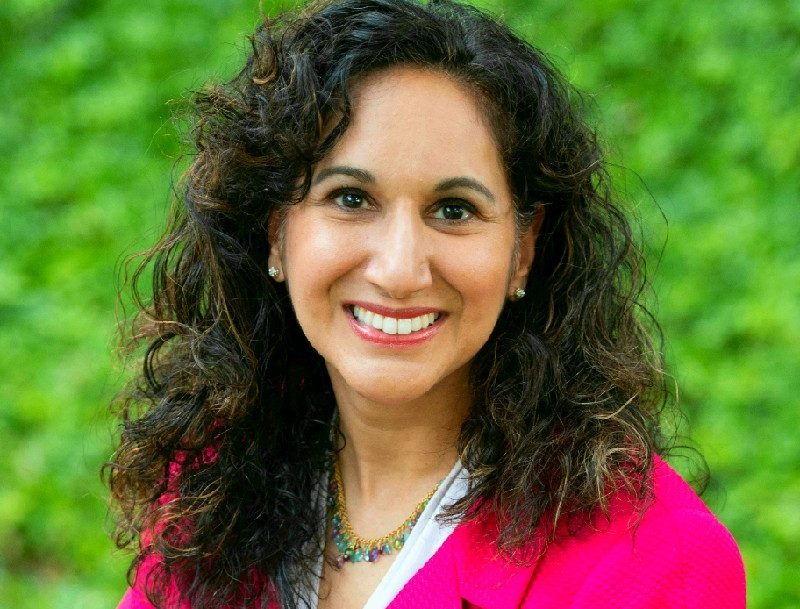
Anjali Sibley: Let’s Harness the Healing Power – The Benefits of Exercise and Physical Activity During Cancer Treatment
Anjali Sibley, Clinical Associate Professor of Medicine at Stanford University School of Medicine, shared a post on LinkedIn:
“In the battle against cancer, every weapon and tool in the arsenal matters. While chemotherapy, immunotherapy, radiation, and surgery are frontline agents, a lesser-appreciated yet potent ally lurks in the shadows – Exercise/Physical Activity. It’s time to talk more about a durable form of supportive and ancillary therapy that has shown to reduce the risk of cancer recurrence and death.
Yes, really. Exercise when used with traditional modes of therapy has tremendous potential to improve patient outcomes both physically and emotionally. Exercise is not a panacea, but a powerful helper, which should be viewed as a vital component in complete care, enhancing the benefits offered by more traditional modes of therapy.
Exercise offers patients a myriad of benefits that extend beyond physical fitness. Also, exercise can cost less than a meal out each day. Okay, there is a time cost but it’s fun and makes one feel good! And…no prior authorizations – worth it right there!!
Recent research has illuminated the profound impact of exercise on patients with local, locally advanced or metastatic cancers. I am promoting that exercise should be viewed as an essential piece of comprehensive care plans. From mitigating treatment side effects to bolstering emotional well-being, the benefits of incorporating exercise can be remarkable, not only on symptom control but also on prognosis.
The literature has shown us examples of meta-analyses and well-designed studies that show the benefit of regular physical activity on symptom management. Studies from the DHHS in the 1990s described health benefits of exercise on multiple diseases including cancer. This was followed by subsequent studies showing a lower risk of cancer recurrence individuals who exercised regularly and breast cancer, prostate cancer, and colon cancer compared to individuals who did not exercise regularly.
Subsequent studies and meta-analyses in JCO, JAMA, Integrative Therapies, and other journals have shown continued benefits with exercise/physical activity and cancer. Risk reduction rates of 20-48% in cancer recurrence, 24-63% in cancer-specific mortality, and significant risk reduction in all-cause mortality have been described.
There are many different ways to define physical activity. That is the good part – one can be creative! Benefits have been noted in patients who were both previously inactive and active, and independent of body weight. We know exercise/physical activity can be beneficial, but it has been challenging to incorporate.
Exercise plans are important to instill an interest and feasible plan for patients to continue during their survivorship period, which can be lifelong. There is ample data to show that exercise during the survivorship period can prolong survival and improve outcomes.
How does exercise work in cancer?
Exercise influences cancer through multifaceted mechanisms that involve both direct and indirect pathways. Exercise can help ward off cancer through a variety of ways including some that affect the seminal Hallmarks of Cancer (Hanahan D. and Weinberg R.). The exact mechanism of how exercise/physical activity affects carcinogenesis is still being studied.
Associated effects of exercise on cancer include the following: Augmenting the Immune Response through NK and T cell activity, B cell activity, and others; Lower Inflammation via actions on anti-inflammatory cytokines and pro-inflammatory mediators; Positive mediation of insulin resistance (enhanced insulin sensitivity); Actions on hormones including Insulin-growth factor, estrogen, and others; Inhibition of angiogenesis; Positive effects on DNA repair machinery; Positive effects on the tumor microenvironment; Effects on circulating tumor cells and others still to be defined and discovered!
What Can We Do?
I ask you to consider how you can encourage patients to become more physically active before, during and after cancer therapy. Utilize members of your team such as nurses and nurse navigators to help patients brainstorm and design physical fitness programs for their unique needs, environment, safety (particularly for women and marginalized populations), finances, and baseline fitness levels. Ask your patients to identify specific, targetable barriers to beginning a fitness regimen.
Exercise guidance is available in many places at low to no cost. Cancer support organizations such as the Cancer Support Community (@Cancer Support Community-SF Bay Area) offer free, engaging fitness classes including line dancing, yoga, tai chi, amongst others.
We will be starting an Exercise during Cancer Therapy Pilot Study at the Stanford Cancer Center Emeryville and Stanford Cancer Center Castro Valley in the East Bay (Stanford Healthcare and Stanford School of Medicine) implementing a guided exercise program into cancer patients’ treatment plans. This pilot is to help place patients into a program during their therapy. We will measure various outcomes related to fitness and cancer.
Wouldn’t it be great if insurance providers covered fitness memberships/classes during and after cancer therapy? This could potentially be cost-effective in the future as means of preventive medicine. Good preventive medicine reimbursement is so desperately needed as around 30-40+% of cancers are related to preventable factors related to lifestyle or infections.
What are some things that have worked in your clinics?
Let us know!
Thank you to my wonderful partners at Stanford Healthcare and Stanford Cancer Institute.”
Source: Anjali Sibley/LinkedIn
